 4.7
|
80+ REVIEWS
4.7
|
80+ REVIEWS
Learning Management Software
7,500+ organizations trust Netchex
High-Quality Content
2,000+ training courses in both Spanish and English. Topics your business needs to remain competitive and compliant, plus, the ability to utilize your own educational content.
Customizable Curriculum
Develop specialized, easy-to-follow tracks for individuals, departments, or company-wide. Preview courses before assigning, attach quizzes, and set pass/fail requirements.
Easy Admin & Reporting
Review and take action on all activities, assignments, and scores. Take a deeper dive with in-depth reporting. Gain insight into individuals, teams, or company-wide.
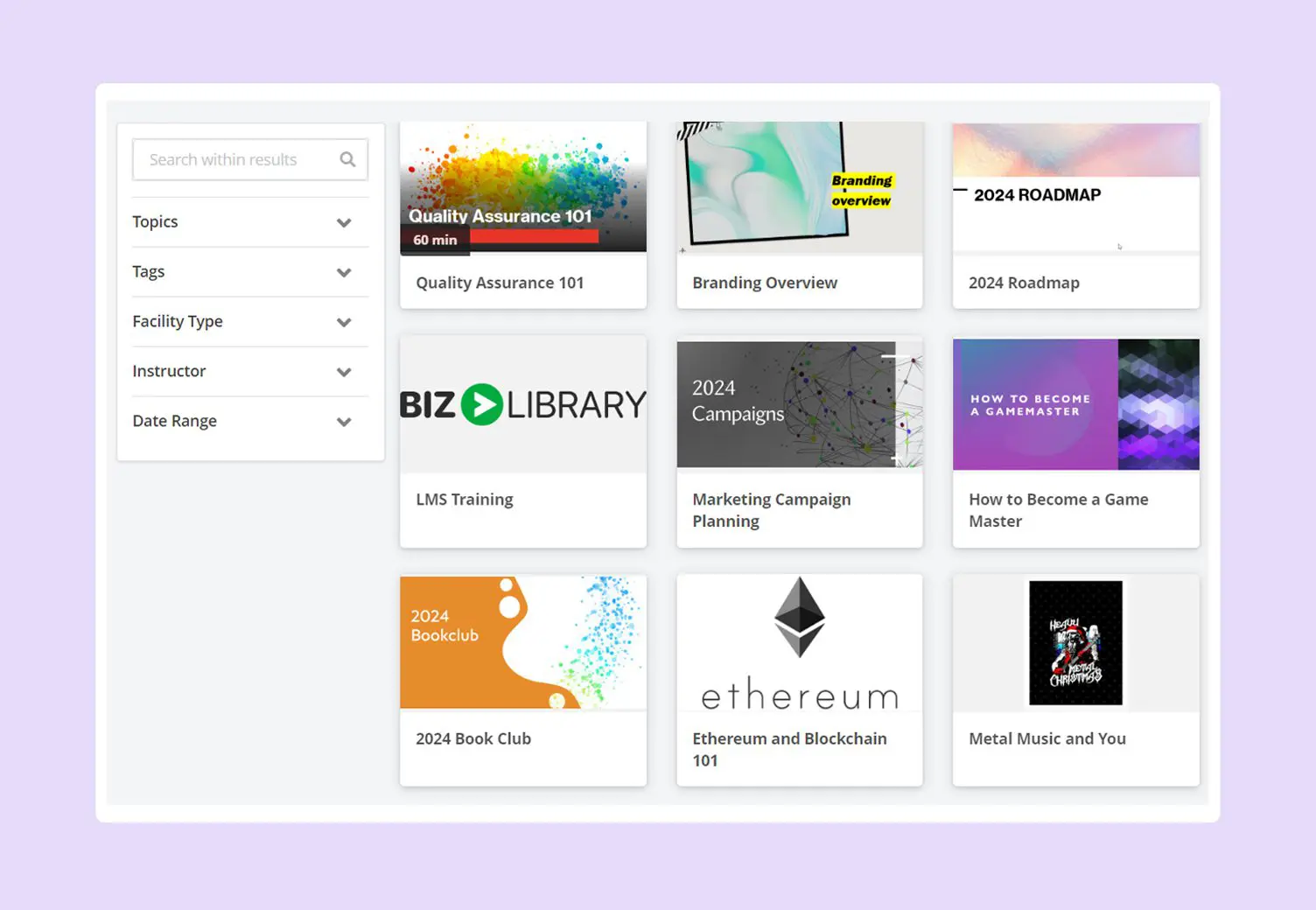
Hours of Educational Content
With NetLearn, your company is ready to begin learning on day one. Explore high-quality, modern videos curated by industry experts.
- Over 2,000 relevant courses covering topics critical to today’s workforce
- Topics include Business Skills, HR Compliance, Workplace Safety, and more
- All courses available in both English and Spanish with ability to toggle back and forth
Create and import your own training materials, including videos, audio, documents, links, and more. All of your training material is accessible in one place with just one login.
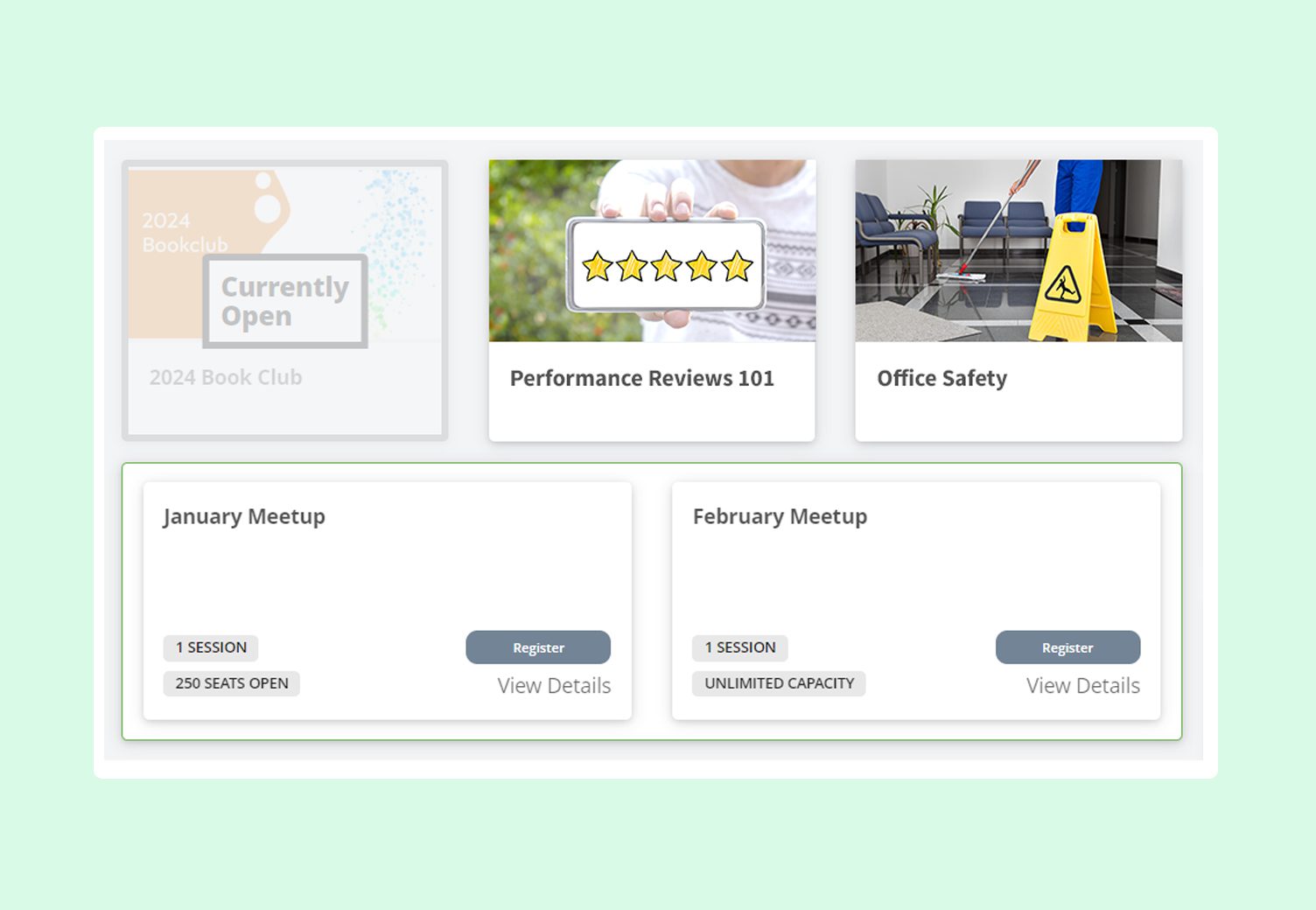
A Diverse and Modern Learning Experience
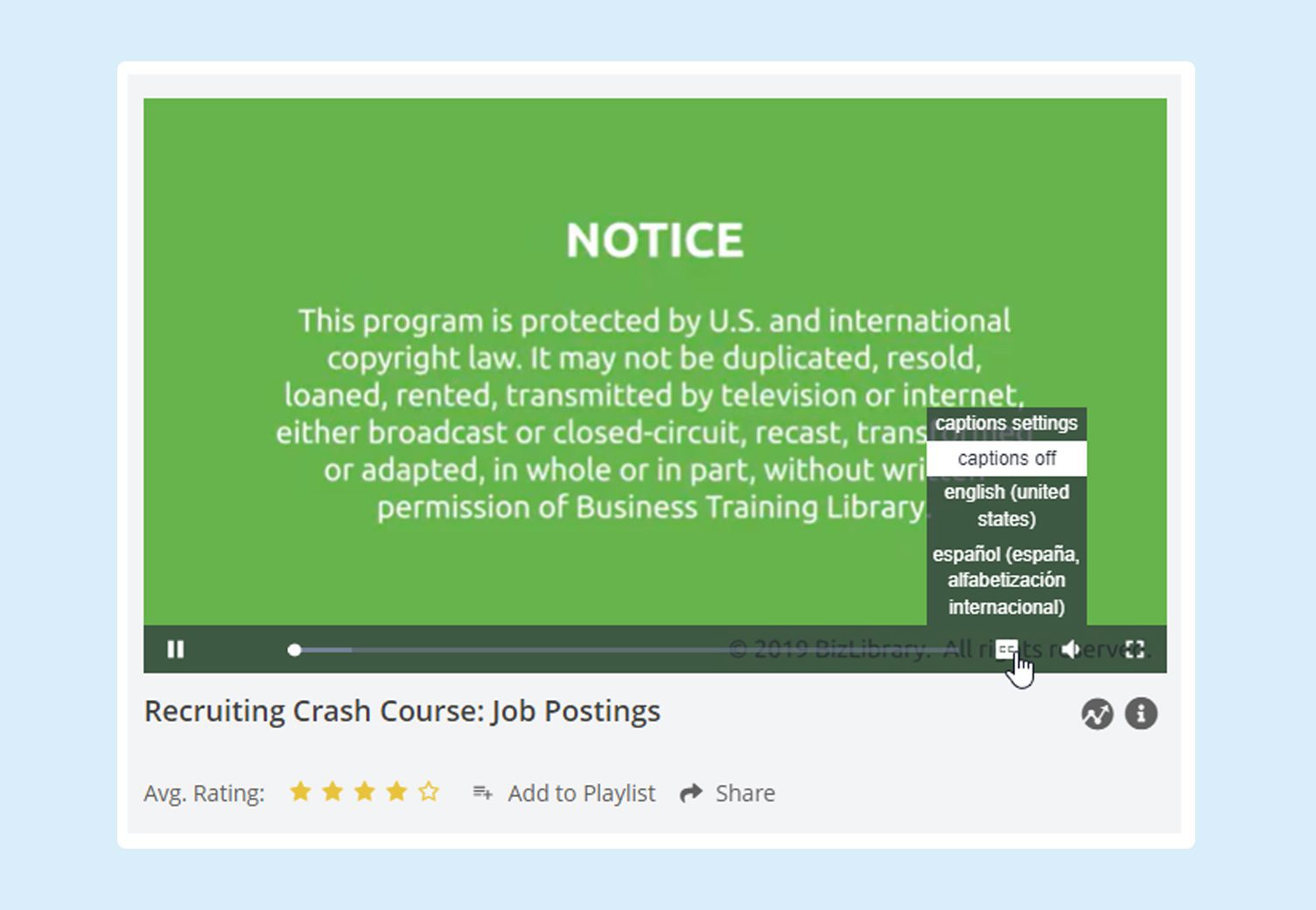
A Powerful, User-Friendly Platform
NetLearn is an intuitive Learning Management System. Makes online learning simple and accessible to all employees.
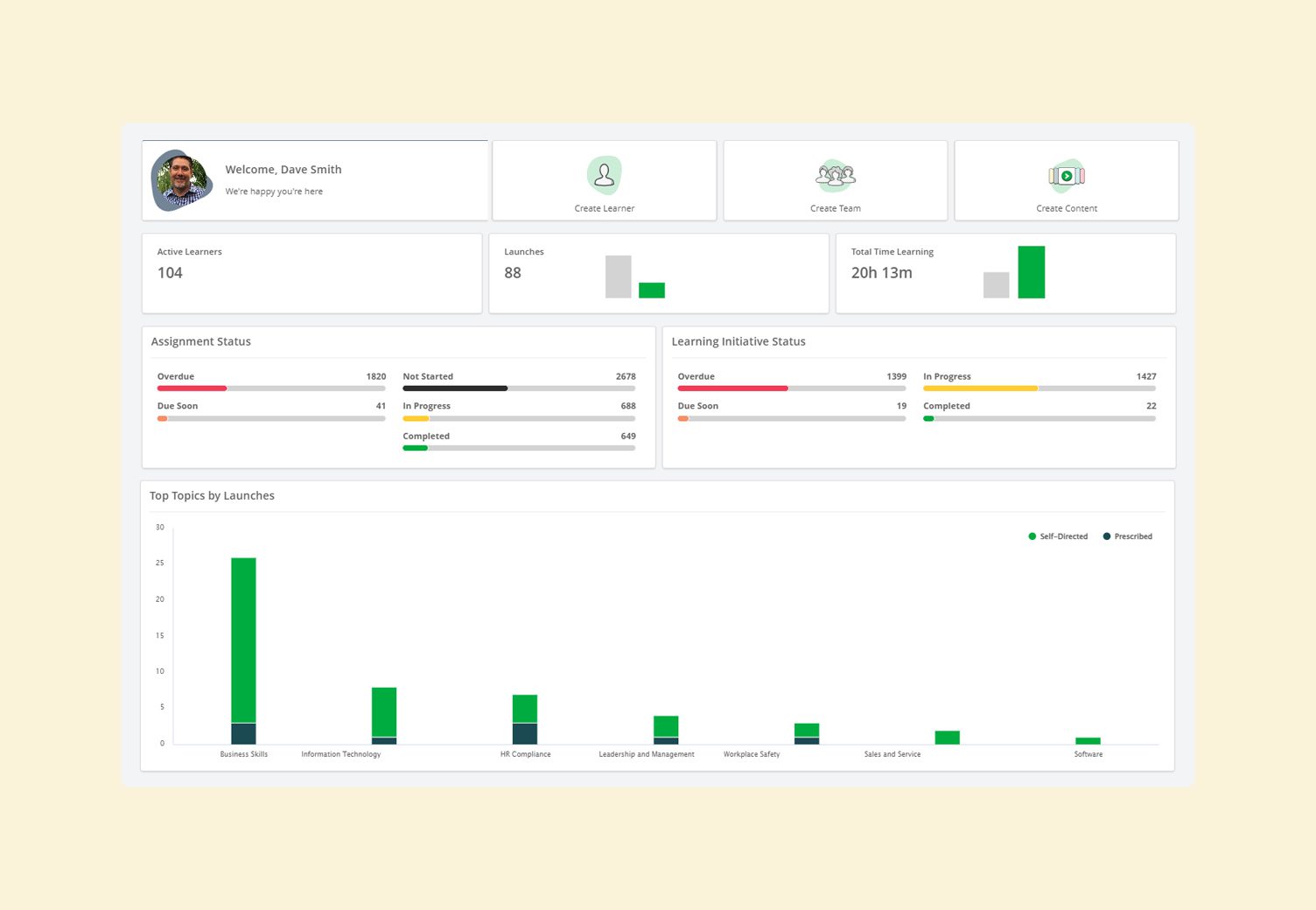
Easy Management and Insightful Reporting
Discover how a Learning Management System can propel your business forward.
Featured Case study
The Colony ER Hospital
Before switching to Netchex in April 2019, the Colony ER Hospital was using ADP – and was not thrilled with their experience. As the facility administrator at their small business, Alexis found it impossible to manage and process payroll correctly with ADP in the event she had to trust another employee to do so. She did not find ADP’s flow of payroll to be user-friendly, often causing errors.


Explore the possibilities of industry-leading technology & exceptional customer care with Netchex.
What is a Learning Management System?
A Learning Management System (LMS) is a workplace software application used to plan, implement, and evaluate specific learning and training processes amongst employees at a company.
As a facilitator for e-learning, an LMS provides companies (particularly HR teams) with a simplified way to:
Deliver educational content (pre-made or internally-created)
Monitor course participation (individually, by team, and company-wide)
Assess employee performance (individually, by team, and company-wide)
Assist with compliance (local, state, and federal, or simply internal)
HR Compliance: What is HR’s Role in Ensuring Compliance?
A Learning Management System typically features interactive features to aid employee participation and engagement, including how-to videos, follow-up quizzes, important documents, and discussion boards.
A Learning Management System can be utilized across a wide spectrum of HR processes, such as:
New hire onboarding
New skill training
Employee development
Manager/leadership development
Skills cross-training
Employee retention
Businesses of all sizes and across countless industries utilize an LMS in the workplace. When used effectively, a Learning Management System can improve training and educational processes, while also saving organizations time and money.
The LMS market is rapidly growing due to high demand and is expected to grow from $16.2 billion worldwide in 2022 to 2.81B by 2025, and ultimately, $70 billion by 2030
source: Lorman

An LMS enables administrators and managers to effectively oversee the entire learning and/or training process online from the cloud. This includes user registration and access, content creation and development, internal communication, tests and quizzes, completion certifications, and various alerts and notifications.
Ideally, for maximum HR efficiency, an LMS would seamlessly integrate with other HR technologies, including things like payroll, time and attendance tracking, and performance management software
People-First Software: Empowering Your Workforce with HR Technology
What are the Benefits of a Learning Management System?
Whatever the scope of your current training program, a Learning Management System can both supplement and expand your training capabilities. Every company must understand the importance of qualified and motivated employees—and training is one of the most practical ways to develop your current workforce.
Seven Reasons Why You Need a Learning Management System
Whether getting new hires up-to-speed, developing employees’ skill sets, or updating company-wide compliance, the right Learning Management System can make the process easier, consistent, and more efficient.
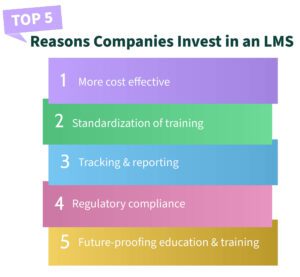
With the right LMS, your company can better develop the skills of current employees and improve ROI for staff training. Here are just a few of the things a Learning Management System can help you accomplish.
24%
Companies that invest in training have a 24% higher profit margin.
source: Gartner

Access to digital training resources
Whether your company creates its own training material or relies upon a library of existing content, your employees should have easy access to all your educational content at any time and from anywhere.
89%
of employees want training available anywhere and anytime they need to do their job
source: Lorman
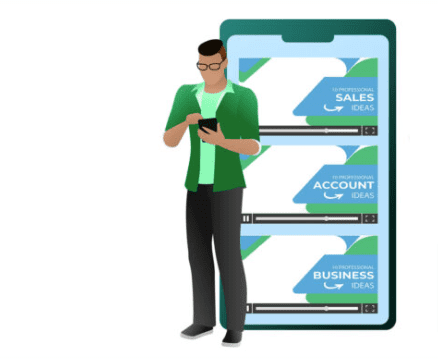
Maximize your potential with state-of-the-art technology & superior customer service from Netchex.
Standardized training content
An LMS promotes standardized training materials across an entire organization, ensuring that all employees receive the same information at the appropriate time.
Reduced costs and improved ROI
In-person training for large groups is a major huge obstacle for daily productivity and often unnecessarily. With a Learning Management System, preparation time is minimal, the material is consistent, and individual employees can complete material at their own pace. With employees working and learning independently at different times, the disruption to daily workflow is minimized.
Ineffective training costs companies $13.5 per $1,000 employees annually.
source: Harvard Business Review

Training compliance
Verifying that each employee has completed the training can be a tedious process for HR, requiring attendance records and follow-up emails. A Learning Management System provides a centralized record of training sessions completed by each employee to maintain compliance throughout your company.
23%
of organizations have no formal compliance training plan
source: Lorman

Closing the skill gap
Regardless of when during the employee lifecycle it is needed, all employees will benefit from continued education initiatives to close the skill gap. A Learning Management System provides opportunities to train individual employees on professional skills and industry best practices, all without taking significant time away from your company’s daily routine.
Developing your workforce
With a variety of training modules, you can help employees expand their skill sets. You can also help with cross-training to improve collaboration and communication between departments. For supervisors and individuals with leadership potential, a Learning Management System allows the company to develop and explore that potential.
74%
of workers are willing to learn new skills or re-train in order to remain employable
source: Lorman

Easy scheduling and presentation
With a Learning Management System, companies can bring everyone together without travel expenses or accommodations. This includes remote employees, staff from multiple locations, and guest speakers from across the country.
From a single sign-on platform, LMS services allow for:
Easy scheduling
Document exchange
Virtual conferencing
Pre-recorded material
Live discussion
Embrace the future of HR technology & elevate your customer experience with Netchex.
Collect reporting data automatically
An LMS gives clear and objective data about participation, performance, and comprehension. Key Performance Indicators from training sessions like “assignment completion” are useful as objective metrics for employee performance reviews.
How Technology Makes HR Reporting & Analytics Easier
Promote an environment of continuous learning
Continuous learning is a fundamental shift to empower employees in adding new job skills and competencies. By encouraging individuals to expand and improve their professional skills, companies can cultivate not only better employees, but happier ones.
92%
of U.S. employees say learning something new on the job makes them more motivated and engaged in their work
source: Training Magazine

How does a Learning Management System promote continuous learning?
At its most basic level, an LMS allows you to consolidate and organize all the training materials used across the company.
Ensure educational and training content is not only available to all employees at the right time, but that it is up-to-date and consistent.
Additionally, employees can access them online from wherever and whenever—a major plus in the growing remote work world.
Benefits of Using a Learning Management System to Promote Continuous Learning
Using a Learning Management System: How to Develop an Effective Employee Training Program
A well-developed employee training program creates huge opportunities for your company, closing skill gaps and motivating workers. Ongoing training can be a reward in itself, preparing future mentors and leaders.
Additional training is also necessary as roles continue to change with new technology. Continual employee training helps your workers keep up to date on changes in your industry.
93%
of organizations are concerned about employee retention and "providing learning opportunities" is the top way organizations are working to improve retention
source: LinkedIn Learning

A Learning Management System makes it easier to:
Adapt training and learning programs to meet individual needs
Mix and match company-wide courses with department specific material
Assign and track completion of specific tasks
Increase productivity and adherence to quality standards
Eliminate weaknesses before they become big problems
Improve employee satisfaction, performance, and retention
Stay innovative and competitive
Address gaps within the organization
Create a strong employer value proposition
How Create an Effective Employee Training Program Using LMS
Step 1: Assess current training
How effective is your current training system? Identify goals and learning objectives. If you don’t have much data, you can assemble a panel of trusted workers and managers for qualitative feedback. Long term staff will know at least a few topics that deserve more emphasis in orientation.
1 in 2
companies in the U.S. does not have formal training strategies in place to address the skills gap
source: CompTIA Workforce Learning Trends

Step 2: Develop a targeted training and development plan
Each department and role will need access to different training materials. Are you ready to respond to the skill gaps of new hires? Make sure that workers with seniority can continue growing professionally, whether they pursue leadership skills or cross training.
Step 3: Create engaging materials and courses
A Learning Management System makes whole collections of courses accessible. Your LMS may come with pre-made training sessions on essential topics like harassment and software tutorials.
You may need to make and add your own training materials on unique company policies and procedures, but try to keep them engaging. A mix of pre-made and custom training courses can be planned for new hires in different roles.
Step 4: Incorporate mentorship and coaching
Employees have different learning styles, and many will benefit from conversations in a mentorship setting. During onboarding, the first days or weeks may include ride-alongs or side-by-side mentorship, but that connection can continue for months afterwards.
Even when working independently, new workers appreciate having a designated mentor to answer questions that arise later. Senior employees also benefit from the opportunity to develop and prove their leadership skills as mentors and coaches.
Step 5: Collect the right data
It’s getting easier to collect and store data, but it takes planning to focus on useful information. A quality LMS can track course completion and quiz scores, reflecting employee participation and comprehension.
Unleash the full potential of your business with Netchex's top-tier technology and unmatched customer service.
40-60%
E-learning requires 40-60% less learning time than traditional classroom learning and enhances retention by up to 60%
source: Shift E-Learning
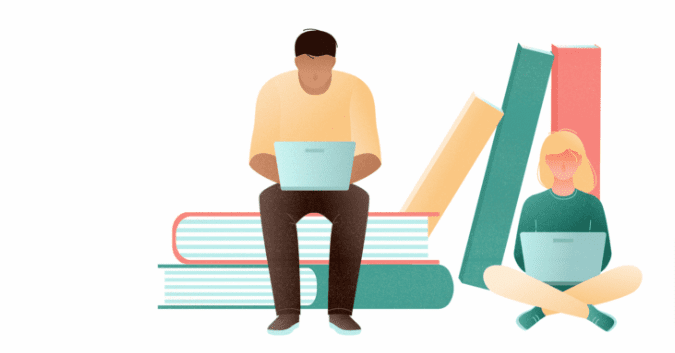
When you want a training program to reduce the number of harassment incidents or missed punches, quantitative metrics make it easier to measure the impact of training. Long term trends need to be compared over the course of multiple years.
Analytics: What do Data & Reporting Mean for Human Resources?
Step 6: Evaluate training programs regularly
Training materials from the past can quickly feel dated, especially with changing social norms around gender and inclusion. New equipment and software changes often mean updating training materials. Whenever it’s time to update your employee handbook, review the related training courses as well.
25%
Since 2015, skill sets for jobs have changed by around 25% Over the next five years, this number is expected to double
source: LinkedIn Learning

Improving Virtual Training Engagement, Completion Rates, & Success of a Learning Management System
Online training provides great opportunities for employees, but how do you get workers to complete their training? Discover how to make the most of virtual training by addressing the most common problems with the help of a Learning Management System.
Tips for Improving Virtual Training Completion Rates with an LMS
What stops employees from completing training?
REASON #1:
Too difficult
REASON #2:
Not enough time
REASON #3:
Lack of motivation
REASON #4:
No support from HR/management
REASON #5:
Poor design
REASON #6:
Forgot about it
Tips to improve virtual training completion rates
Provide purpose of training
Don’t be coy about explaining the motivations behind different training topics. Look for teachable moments, connecting the training material to current and upcoming challenges for employees.
Set, measure, and track training goals for individual workers by aligning your employee development plans with available training courses.
61%
of adults in the United States seek career development opportunities when considering job opportunities
source: Lorman

Set realistic due dates
Employees need a reasonable window of time to complete training courses. The key is finding a proper balance in time consideration for workers.
- An excessively short deadline asks workers to prioritize training over important tasks
- Set deadlines too far in the future and trainees might forget material along the way
15-25%
Employee performance can increase by 15-25% if you allow them to learn at their own pace
source: Hurix

Keep training short and focused
Virtual training material should be delivered in bite-sized servings, not full meals. Package information into smaller portions that are easily digested and applied, then build on that foundation with additional training.
10-15 minutes
Recent research shows that the Ideal length of a video lesson for online learning should not be more than 10-15 minutes
source: QualityMatters.org

Utilize easy-to-use training features
You can’t expect full comprehension from just reading and watching videos. Use technology to make courses more accessible and engaging. Both in-person and online training programs are better interactive. Use short quizzes to test knowledge of the course material before and after each session.
93%
of employees want easy-to-complete training; 91% want their training to be personalized and relevant
source: HR Dive

Communicate clearly and regularly
Make sure learners understand the purpose of training courses. Get feedback from trainees during and after virtual training. Make sure that workers feel heard, improving and streamlining courses with their feedback. Use your LMS to foster a culture of continuous learning at your company.
Reward those who complete training
A little positive reinforcement goes a long way. Recognize workers who complete training, and maybe try promoting a little friendly competition between teams.
Regularly update material
Training courses need to be updated to reflect evolving policies and procedures. Collect feedback with post-training questionnaires and routine employee engagement surveys. Whenever you update a section of the employee handbook, be sure to check any related training materials for outdated information.
Ensure mobile functionality
A Learning Management System should always provide remote access to courses. If workers choose to complete training on weekends or after hours, a mobile app makes it easier. Plus, remote workers may not always have access to their computers.
90%
of employers agree it's beneficial to offer mobile-accessible training
source: Lorman

Experience the Netchex advantage: advanced technology & unrivaled customer support.
Using a Learning Management System to Improve the Employee Onboarding Experience
A Learning Management System gives your employees (new and old alike) access to all the introductory and training material they need in one user-friendly portal. It’s particularly useful for onboarding new hires.
82%
A "great" employee onboarding can improve employee retention by 82%
source: Brandon Hall Group

Here are just a few of the ways to use an LMS with new employees:
Overview organization and amenities
A presentation in a Learning Management System is a great alternative to verbally explaining all the information new hires need from the start. It’s easy to forget key details during meetings and office tours, but an online presentation makes sure nothing is forgotten. Even in a remote working environment, company policies and expectations can be easily explained.
Introduce the company culture
From casual Fridays to seasonal cookouts, newcomers want to know what to expect at the office. Include practical information, such as a brief history of the company and organizational hierarchy.
Beyond generic mottos, what are the values and priorities that define your company culture? A detailed introduction will help new employees integrate themselves with the rest of the staff, reducing the opportunities for misunderstandings and false assumptions.
Explain benefits, PTO, and other policies
Every employee needs to be informed about employee benefits and other company policies. It’s a lot of information to cover, but highly important. An LMS allows you to:
Efficiently and clearly convey all that information
Compare the advantages of different benefit options
Explain how PTO is accrued and how employees should request to off
Unlike in-person sessions, online material won’t require the constant presence of a manager or HR representative. If questions arise, a shorter follow-up meeting or email can address those individual concerns.
Help New Hires Hit the Ground Running with a Learning Management System
Replace in-person meetings with self-guided lessons
Traditional in-person training has plenty of downsides, including time and bandwidth constraints. Take the presentations you traditionally gave in-person to new hires, and convert them to videos and self-explanatory slideshows. Without the time-consuming meetings, you’ll decrease the burden on management, HR, and new employees. It’s a win—win—win scenario.
85%
of employees want to choose training times that fit their schedule
source: Lorman
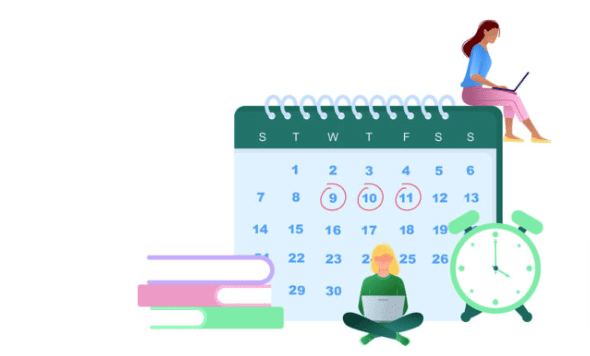
When using a Learning Management System, employees log in to watch videos and click-through slideshows independently while working at their own pace. More experienced employees can move quickly through familiar information.
Answer frequently asked questions
With a quality Learning Management System, it’s easy to create your own custom sessions, tailored to the specific needs of your company. When you’re designing your process, any Frequently Asked Questions can be included in your updated training. You may also need a separate “Miscellaneous” module for material that doesn’t naturally fit elsewhere.
Encourage high achievement
Kickstart a performance-based work culture by setting the right tone in early training. First impressions have a lasting impact, and enthusiasm can be contagious. Why not get new employees excited about joining an efficient and motivated team?
Set standards and monitor progress
A quality LMS will include built-in reporting software. Set a course for each trainee, including company-wide and department-specific material. As participants complete each training module and occasional quizzes, be sure to check in and offer encouragement.
60%
of businesses don't set any goals or milestones for new hires during onboarding
source: Urban Bound

Transform your HR operations with Netchex's innovative technology & unparalleled customer service.
The Value of a Learning Management System in Remote and Hybrid Work
Access to premium training is an employee perk that also benefits the business. An LMS provides value to everyone at your company, including remote workers. Workers appreciate diversity, freedom, and flexibility, while management appreciates the built-in management and reporting.
Six Ways a Learning Management System Helps Grow Your Remote Workforce
A Learning Management System is a great tool for managing and motivating a remote workforce. Discover what an LMS can do to help your business grow with remote workers and beyond.
Easy remote onboarding
Onboarding is often a challenge, especially for remote workers. As businesses adapt to the shifting workplace, remote onboarding has become the safer and more efficient option. Save time and ensure consistency by uploading orientation videos and presentations to a LMS that is fully-integrated with your HCM.
Tips for Remote Onboarding New Employees
Consistency and availability of content
It’s easy to overlook the inconsistencies of traditional in-person training. When every trainee receives the exact same online training, the results are far more reliable. Additionally, a quality Learning Management System includes ready-made material that can provide the backbone to or supplement your company’s own training material.
Between the home office, parenting duties, and other distractions, remote employees typically work odd hours. Online training needs to be accessible around the clock. While some employees who work from home might keep normal business hours, the goal should be providing as much time and flexibility as possible. When learning new or complex skills, trainees may choose to watch or repeat lessons.
Custom curriculum for remote roles
Your training should be adapted for specific roles, including remote work. Some info will only be relevant for on-site staff, while other policies will only apply when employees work from home.
With an extensive online training catalog, you can select and schedule courses for each position and employee. Instead of a one-size-fits-all series, your custom regimen will keep employees engaged with useful and relevant information.
91%
of employees want their training to be personalized, relevant, and up-to-date
Source: Lorman

Clear reporting and tracking
If employees are sitting through training sessions without learning anything, then something needs to change. Without reporting data, it’s difficult to track the effectiveness of any training program.
HR Data Integration: Streamlining Data with HR Technology
Fortunately, most top-tier Learning Management Systems automatically include reporting data. Here are just a few things you can do with that kid of reporting:
Track which departments and employees have completed new lessons
Add quizzes to ensure participants comprehend and absorb the training
Encourage individual competition for completion percentages and high scores
10 Critical HR Metrics for Human Resource Management
Close skill gaps
Each new hire brings a different set of skills and experiences. Make sure that everyone is fully trained on the essentials—company policy, workplace safety, compliance. Help employees improve on their weaker subjects and skills. The challenge is making sure that training content is useful and applicable. Those who meet or exceed expectations can be encouraged to pursue further training at their own discretion.
72%
of organizations believe that e-learning helps them keep up with change, thereby increasing their competitive edge
source: CertifyMe.ne

Achieve HR Goals with a Learning Management System
Retention
Upskilling includes employee advancement, continuing education, and skills training factor into employee retention. Upskilling is additional training and development opportunities beyond what’s necessary for a worker’s current role.
86%
of millennials would be less likely to leave their current position if training and development were offered by their employer
source: Lorman

While cross-training employees in different skills gives you a more flexible workforce, self-motivated employees want a pathway to become more qualified for future openings at your company. Upskilling allows you to develop and motivate workers while empowering them to improve themselves, as well as the company.
Why Upskilling is the Key to Employee Retention
34%
of employees who left their previous job were motivated to do so by more career development opportunities
source: Gartner

Reasons to invest in retention through training and upskilling
Cost
Recruiting is expensive and time consuming. Promoted employees need significantly less time, training, and paperwork.
Loyalty
Employees who work their way up feel more invested in the continued success of your company. Employees are grateful to your company for the opportunity to grow professionally.
Familiarity
It’s hard to guess who will mesh with coworkers and not disappear after a few months. Long term employees have a track record with your company, so it’s easier to manage issues.
Confidence
Tenured workers have confidence that comes from a better understanding of your company’s processes and workforce.
Motivation
Employees who actively move up the ladder have incentives to keep performing at a high level. Internal promotions motivate the entire workforce by rewarding hard work and persistence.
Diversity and Inclusion
Training on diversity and inclusion offers measurable benefits for the company. Utilizing your Learning Management System to infuse diversity and inclusion into your company’s training ensures the process is streamlined, structured, and universal.
45%
of learning & development professionals planned to implement DEI programs in the coming year
Source: LinkedIn
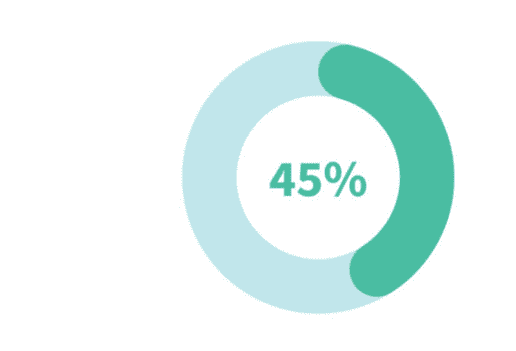
Here are six ways a Learning Management System can improve your diversity and inclusion efforts:
Identify current strengths and goals
Create an environment of learning and understanding
Develop and adopt company-wide diversity training initiatives
Ensure minority employees have clear paths to promotions
Make sure training material is inclusive
Train the entire company for success
Agile Workforce
Cross-training allows employees to expand their knowledge and abilities while making your company stronger.
Instead of training in only the skills an employee uses daily, cross-training encourages staff to:
Learn about tasks that are performed by colleagues
Develop a better understanding of roles and processes
Improve collaboration across departments
Increase communication among employees
Create redundancies and reduce skill gaps
45%
Cross-training has shown to be the most effective method for improving both individual and organizational performance, yet only 45% of companies offer cross-training programs
source: SHRM

Cross-training employees offers numerous benefits to both the individual and the company, including:
Return on investment
Cross-training is the best way to maximize your return on investment for both employees and a Learning Management System. It can minimize the expenses of regular training and onboarding new employees.
Improved teamwork
As the teams work together and better understand each other’s jobs, it’s easier to communicate and reach mutual understandings. With a better grasp of each part of the process and potential bottlenecks, everyone is better prepared for working toward a common goal.
Efficient processes
Cross-trained employees have a better understanding of overall processes, without needing frequent check-ins or updates. Additionally, it’s easier for employees to cover for each other and stretch capacity in tight situations.
Motivation and morale
Cross-training is a positive way to illustrate and remind staff that no individual is more important than the team. Versatility and willingness to learn should be more highly valued.
Improved agility and resilience
With cross-training, your employees are better able to cover and adapt to major changes. Every task and process can still be performed, even when circumstances prevent normal routines.
Learning Management System (LMS) FAQs
A Learning Management System can be utilized across a wide spectrum of HR processes, such as:
- New hire onboarding
- New skill training
- Employee development
- Manager/leadership development
- Skills cross-training
- Employee retention
As a facilitator for e-learning, an LMS provides companies (particularly HR teams) with a simplified way to:
- Deliver educational content
- Monitor course participation
- Assess employee performance
- Ensure proper compliance
The most important features to look for in an LMS are built around optimizing the user’s learning experience, including a pre-built training/education material, social component, mobile access, data and reporting, and various integrations. Other popular LMS capabilities include gamification, course creation, custom assessments, and certification management.
Learning Management Systems can vary greatly from one vendor to the next. Additionally, the need for specific features depends largely on the individual company.
The cost of a Learning Management System depends on a number of different factors, including the number of employees, your company’s specific needs, and other similar factors.
When comparing LMS providers, it’s important to take additional benefits into account like customer service, ease of use, and integration capabilities. Choose a provider that meets your needs.
While a Learning Management System hosts various educational courses and manages your employees’ learning journey, it also produces a significant amount of data, including:
- Employee assessment scores
- Course performance and progress
- Surveys and feedback
Companies utilizing this data can record, measure, and analyze information about the learner through their interactions with the LMS.
Generally, yes, but not all HR technologies are created equal. In Netchex’s case, we actually mean it, as Netchex was recently named the easiest to use HR Software Solution by SoftwareAdvice.
At Netchex, we pride ourselves on our LMS’s ease-of-use and overall user experience. Users praise Netchex for how easy the navigation and self-training features/resources are, in addition to highlighting how overall user-friendly the software is.
For training and education, utilizing a Learning Management System is easier for all employees, including managers and HR. An LMS enables your training to be more consistent and precise, removing many of the tedious steps in creation and focusing on the information your employees want/need.
Compared to more traditional training methods, an LMS will save you significant time and effort. Specific time is dependent on company size, integration features, and other factors. In addition to saving time (and money), an LMS enables your HR professionals to focus more of their time and attention to your company’s most important resources—your employees.
Implementation with Netchex is fast and easy for LMS, as well as other HR technologies. An Implementation Lead is assigned to you to help make the conversion to Netchex as seamless as possible. They will guide you through the conversion process, introducing Netchex to your company, and ultimately, your first successful training.
The relationship between the client and implementation team typically lasts around 60 days. From there, you will transition to the Netchex Service Team.
READ: HR Technology Implementation Tips to Ensure Company-Wide Adoption
To choose the right LMS, consider factors such as your organization’s size, budget, specific recruitment needs, user-friendliness, integration capabilities with other HR systems, customer support, and scalability for future growth.
Netchex Learning Management software prioritizes security and employs industry-standard measures to protect all types of data. Both use encryption, access controls, and regular security audits to ensure data integrity and confidentiality.
Yes, all Learning & Training functionalities are included in the Netchex mobile experience. The Netchex mobile app is a fully functioning extension of the Netchex system for both administrators and everyday employees. All HR technology features, such as Learning Management, payroll, time & attendance, benefits administration, and more are all available to users.You can download our Netchex mobile application on both Android (Google Play) and iOS (Apple Store) phones.

